Bus stops play a critical role in determining the capacity and service quality of bus services. While bus stop capacity will not be relevant for many bus stops in New Zealand, consider the hourly capacity of bus stops required on high volume bus corridors or at stops with particularly long dwell times.
Bus stops determine the overall capacity of a bus route, so it is critical for bus stops to be designed to have sufficient capacity for the planned number of bus services along the route.
Bus stops with insufficient capacity will force buses to queue on the road, causing delays for bus passengers and negatively impacting road safety and passenger accessibility.
The length of time a bus spends occupying a bus stop is called dwell time.
Dwell times of less than 30 seconds are optimal from a bus capacity perspective. Longer dwell times incrementally reduce bus stop capacity.
Factors that influence dwell times, include:
Placing bus stops near intersections with traffic signals facilitates walking access to and from the bus stop, but it also reduces bus stop capacity. When a bus stop is located at a signalised intersection or crossing, if the light is red, buses cannot:
The impact of a traffic signal on bus stop capacity is determined by the green time ratio; that is, the proportion of bus green time to total traffic signal cycle length. The higher this ratio, the more capacity a bus stop has. The figure below illustrates the difference between a 25 percent and 50 percent green time ratio.
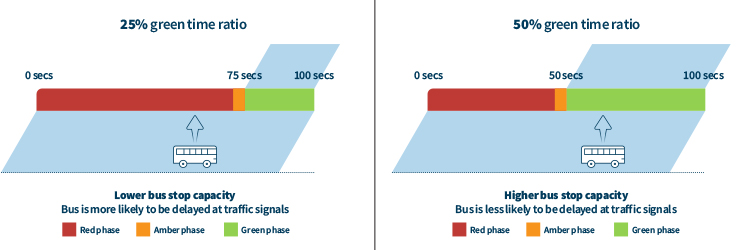
Impact of a traffic signal's green time ratio on bus stop capacity.
For near-side stops, dwell time that occurs during the red phase does not affect capacity, because the bus would not have been able leave the stop during this time anyway. Compared with near-side stops, far-side stops can have a larger impact on bus stop capacity because dwell times and red signal times cannot overlap.
If traffic signals are significantly reducing bus stop capacity, consider mitigating the effect by:
PTDG: Public transport priority and optimisation
Where more than one bus at a time is required at a bus stop, the stop may be one of three types: split, linear, or sawtooth (see figures below). Each type has different implications for bus stop capacity.
The advantages, disadvantages and practice guidance for each stop type are summarised below.

Example layout: split stop with independent operation.
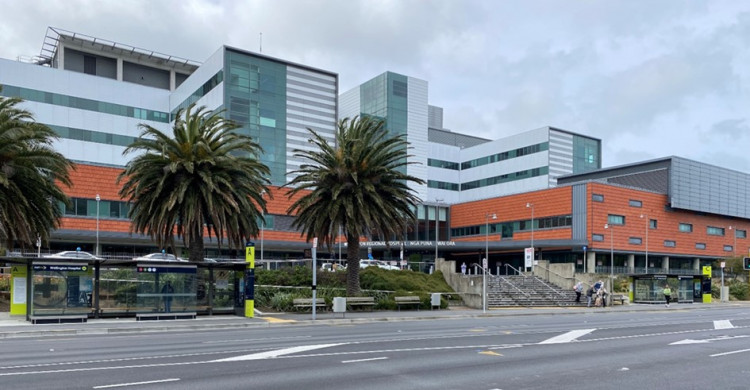
Bus stops by Wellington Hospital are split for multiple routes. (Source: Nadine Dodge)
 Example layout: linear stop with dependent operation.
Example layout: linear stop with dependent operation.
 Example layout: linear stop with semi-dependent operation (bus can exit but another bus cannot enter the space without relocating other buses).
Example layout: linear stop with semi-dependent operation (bus can exit but another bus cannot enter the space without relocating other buses).
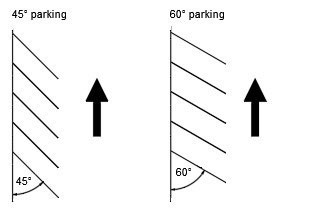 Example layout: sawtooth - angled bus stop parking.
Example layout: sawtooth - angled bus stop parking.
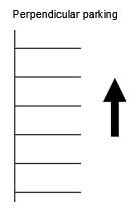 Example layout: perpendicular parking.
Example layout: perpendicular parking.
If it is not feasible to increase bus capacity by reducing dwell time or signal delays, consider adding additional bus stops. Base decisions on additional bus stops on a mixture of:
Bus stop capacity should be well above scheduled hourly bus volumes to allow for efficient operation, even when some buses have longer than average dwell times.
The figure below shows the indicative hourly capacity of bus stops away from traffic signals, assuming average dwell times of 30, 60 and 120 seconds.
If operating conditions allow for dwell times of 30 seconds or less, one or two bus bays should provide adequate capacity for almost all bus stops in New Zealand, with a capacity of 68 buses per hour with one bay, 120 per hour with two linear bus bays, and 136 per hour with two split bays.
If a bus stop has dwell times of 60–120 seconds, bus capacity is dramatically reduced to 20–26 buses per hour per bay. If the stop also serves as a timing point or layover and experiences longer than normal dwell times, it may be desirable to provide additional bus bays to ensure adequate capacity.
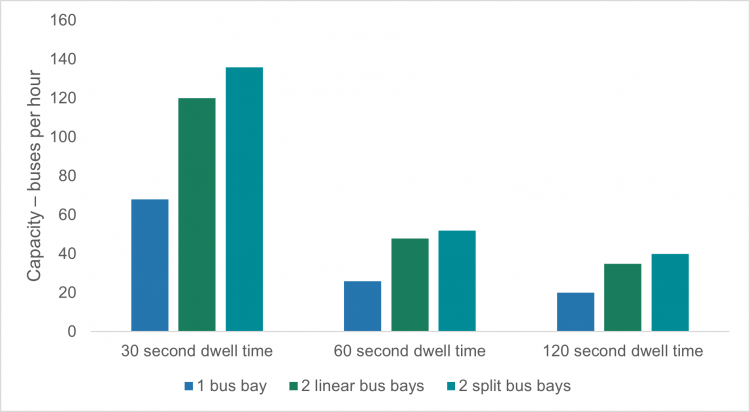
Capacity of bus stops away from traffic signals. (Source: Nadine Dodge, using data from Transit Capacity and Quality of Service Manual (3rd edition))
The figure below shows the indicative hourly capacity of bus stops at traffic signals, assuming a green time ratio of 0.5 and average dwell times of 30, 60 and 120 seconds.
With a 0.5 green time ratio, traffic signals can be expected to reduce capacity at near side bus stops by around 30 percent, although this will vary depending on dwell times. For bus stops on the far side of the traffic signal, a 0.5 green time ratio would reduce capacity by 50 percent.

Capacity of near-side bus stops at traffic signals. (Source: Nadine Dodge, using data from Transit Capacity and Quality of Service Manual (3rd edition))
Transit Capacity and Quality of Service Manual (3rd edition)(external link)
For further information about bus stop layouts including the advantages and disadvantages of kerbside, in-lane with bus boarders, or indented bus stops refer to: Bus stop layout